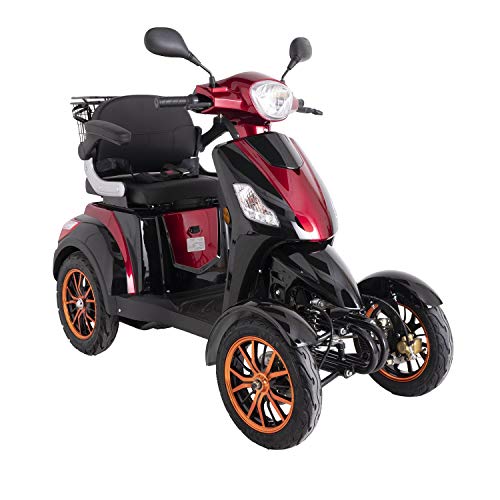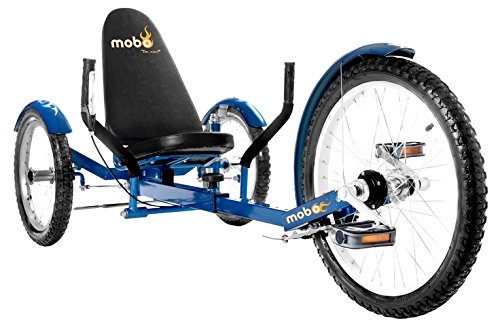 Consider buying a scooter for someone who has an illness that limits their mobility. Some types of insurance can help pay for the cost, such as Medicare and Medicaid.
Consider buying a scooter for someone who has an illness that limits their mobility. Some types of insurance can help pay for the cost, such as Medicare and Medicaid.
How do you decide which one is right for your child? This article will cover the basics of these mobility scooters.
Features
Basic mobility scooters are an affordable option for those who need assistance in moving around due to a medical condition. They’re generally less expensive than powered chairs and can be used on terrains that are rough. They’re not a substitute for wheelchairs and should only be employed when other mobility aids such as walkers, crutches or even stairlifts aren’t working.
The fundamental features of a mobility vehicle include a throttle, a tiller, lights, indicators and the horn. The tiller controls the direction of the scooter and is usually adjustable to suit your personal preferences. A horn is a vital safety feature that alerts other road users of the presence of the scooter particularly in pedestrian zones. The lights on a scooter are crucial for visibility in low-light conditions as well as at night. They can also be used to signal other road users of the driver’s intention to turn.
An indicator is an electronic device that displays the speed of the scooter. They are typically located on the control panel. Some have visual representations as well as traditional gauges. Some scooters come with an wigwag feature that lets the user control the forward and reverse direction by applying different pressures to the throttle button.
Some basic mobility scooters can be folded or dismantled, which is beneficial when it comes to transporting the device. It is important to consider the place you’ll be storing it, preferably close to an electrical outlet to allow easy charging when not in use. A storage cover will keep your scooter clean and safe from the weather.
Size
When looking for a scooter, it is important to know the device’s dimensions. This will help ensure the scooter is suitable for your home’s doorways and other restrictions on the environment. The dimensions of the scooter also affect the safety and experience of the user. A scooter that’s too small could cause discomfort and even injury, whereas larger models could be difficult for you to maneuver around certain areas.
Additionally, the size of a scooter could be affected by accessories such as baskets, cup holders, and even mobile devices or oxygen tank holders. These accessories can increase the overall scooter dimensions while enhancing the user experience. The type of battery used can also impact the overall dimensions of the scooter. Sealed lead-acid batteries are generally heavier and thicker than lithium-ion ones.
Many manufacturers offer lightweight folding wheelchairs which can be conveniently stored in tight spaces or in the trunks of cars. These mobility scooters are ideal for a trip to the shop or for a relaxing afternoon in the park with family and friends.
Three-wheeled scooters have a broader base and a shorter turning radius than four-wheeled ones, which makes them better suited for maneuvering in tighter spaces like narrow shop aisles or between furniture in your home. On the other side, four-wheeled scooters are better suited to outdoor terrain because they are more stable and have a larger base.
On the instrument panel of many scooters, there is an indicator of charge that shows how far you can travel before you need to recharge your battery. This will vary based on the terrain you’re traveling on as well as the weight of your scooter and its accessories as well as the speed at which you drive.
Weight
The weight of a mobility scooter is a major aspect for owners. It influences everything from maneuverability to portability to the endurance of components.
Scooter weights vary widely, depending on the frame’s material and size. Aluminum is a popular option for mobility scooter frames because of its light weight but steel is a better choice due to its sturdiness. Some manufacturers use carbon fibre to reduce weight without the strength or durability.
Another major factor that impacts the weight of a scooter is the type of seat and other accessories. Cup holders, baskets and oxygen holder or mobile device attachments can increase the weight of a scooter. However, it’s important to keep in mind that many of these accessories can be easily removed or reattached to help lower the weight of your mobility scooter.
The weight of a scooter can be affected by its battery type and the power source. Sealed lead acid (SLA) or sealed lead-acid batteries, are typically heavier and bigger than lithium-ion batteries. This can make an enormous difference in the weight of a scooter.
The method of transport and the destination may impact the overall weight of a scooter. Folding mobility scooters are easy to store and be tucked away in tighter spaces. They are also lighter than their non-folding counterparts. In addition, scooters that can’t be disassembled could require the help of an automobile lift to transport. In these instances, it’s a good idea to test the weight of your preferred scooter prior to making a purchase. This way, you can be confident that it meets your needs and is easy to move or lift. To ensure that you get the most of your new scooter, we encourage you to think about buying it through our partnership with Klarna or Shop Pay, which offer a simple and transparent financing options for all purchases.
Travel Distance
If you’re considering using an electric scooter to go out and about in the local area, it is important to think about how far you can travel on one charge. There’s no need to be stranded in a location and unable to get home since the battery has died.
The distance that a scooter will travel on the same charge is determined by a number of factors. This includes the weight of the rider, terrain and the speed at which it is driven. Heavy riders require more power from the scooter in order to move, which can decrease the distance it can cover on a single charge. The battery may also be depleted more quickly when you are riding on steep hills or on rough terrain.
Scooter accessories such as baskets and lights add weight to the scooter, which can reduce its driving range. To extend the range of the scooter, it’s recommended to remove all unnecessary accessories.
The slower speed of driving can also extend the distance the scooter can travel. While it may appear counterintuitive, speeding up will consume more energy, which will reduce the scooter’s overall range. The slower speeds can also prolong the battery’s lifespan. These tips will help your advanced mobility scooters scooter last longer and allow you to be more flexible when you’re out and about.
Comfort
It is important to consider comfort as a factor to consider when purchasing a basic mobility device. These scooters are designed to be comfortable for the user, and come with comfortable seats and adjustable armrests. They also let the user operate their scooter with ease and without stress.
This is especially crucial when the scooter is used for long journeys or over rough terrain. A good quality padded chair is essential for comfort and back support. It is also a good idea to choose an electric scooter with a captain’s seat (typically used on larger scooters) that allows the user to shift their position, which can offer extra support and alleviate discomfort in certain areas of the body.
Another key consideration is the amount of storage space available on a mobility scooter that is basic. A walker, rollator, or wheelchair can be used to transport personal items, but they are not designed for carrying the typical items you’ll find on shopping trips. Basic mobility scooters typically include basket storage, and under seat and behind seat storage options. Some models may also include a walking stick or umbrella holder.
 The type of battery used in the basic mobility scooter should be considered. The majority of scooters are powered by lithium batteries that are lighter and give greater range than lead acid batteries. Furthermore, lithium batteries don’t have the same effect on the environment as lead acid batteries do.
The type of battery used in the basic mobility scooter should be considered. The majority of scooters are powered by lithium batteries that are lighter and give greater range than lead acid batteries. Furthermore, lithium batteries don’t have the same effect on the environment as lead acid batteries do.
